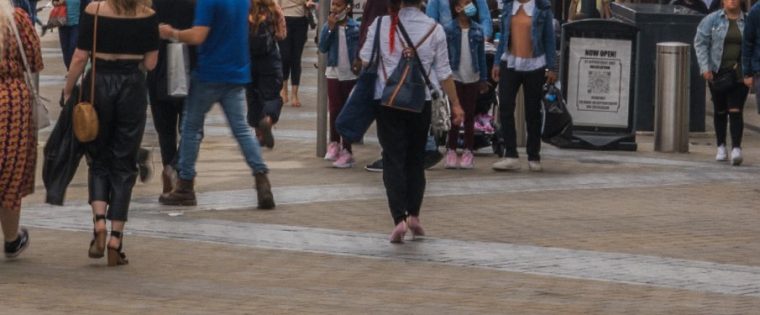What does ‘pride in place’ mean for future of high streets?

Liz Truss entered office facing the fiercest economic headwinds in living memory, with rising inflation, inexorable increases in energy, labour market bottlenecks and plummeting consumer confidence.
As the calendar would have it, 100th day will come to pass on 15 December in the middle of the Christmas shopping season which threatens to break a retail industry already on the ropes from the pandemic and recovery journey.
Before then, Localis will address the state of the high streets at the Institute of Economic Development’s Annual Conference, taking place on 6 October in the immediate aftermath of the party conference season. The question to answer is how innovation can be driven in the regeneration of our towns.
Empty property auctions
For central government, the idea of local economic generation is affixed to the notion of ‘pride in place’. Under objective three of the government’s Levelling Up the United Kingdom White Paper, there is the goal of restoring “a sense of community, local pride and belonging”. Under this objective, the paper speaks of ‘pride in place’ consisting of policies to support regeneration, communities, green space and cultural activity.
This is the framework within which local government must now function when approaching levelling up at the local level, particularly when invoking a sense of pride or local identity.
Within the Levelling Up & Regeneration Bill itself, the main provision around high streets is one that would allow councils to auction off empty premises to prospective new tenants. On the face of it this seems a good policy lever to bestow given that the British Retail Consortium’s most recent survey indicates one in seven high street premises currently lies vacant.
However, the reality is that hard-pressed and over-stretched councils will struggle to allocate the time and resources to managing this new and untried process of inverting the fundamentals of property which offers them less potential benefit than the landlords, who might be hard to track down in any case.
Planning and placemaking
Driving innovation in the centre of towns will be helped, certainly, by whatever form or tournament financing councils can successfully bid for. But salvation will not come from government grants alone and local government as the key institutional player in the long-term management of high streets and town centres will have to prove adept and adroit in making use of the tools and resources at its disposal.
Such levers include planning (and strategic planning), licensing, procurement (for which we can read ‘social value’) and transport.
The relationship between high streets, town centres and the planning system is a core aspect of effective placemaking and building or strengthening communities. It is this ability to direct the right type of development that endows a locality with a strong sense of cultural identity and place pride. Together with licensing powers, this can for example promote a practical role for the forces of arts, culture and creative industries to occupy larger vacant retail units.
Procurement, and the ability to direct, leverage and flex how the everyday process of buying goods and services, can be harnessed for the benefit of communities and local businesses. This should, of course, be more than bringing out more hanging baskets and should encompass the public realm and the physical and social infrastructure a locality needs to bring itself into contention. And when it comes to a larger scale and size, the innovation offered by transport, whether this be micro-mobility, new roads and river crossings, supporting bus networks or other mass transit, will have to be travelled on or in to be believed.
Inflation’s vampiric bite
Of course, good placemaking requires strong and visionary place-makers – regeneration cannot happen in a vacuum. Beyond this, the common thing all these levers have is money. Planning departments have, by and large, been denuded of resources since 2010 and periodically stripped of talented and capable officers lured to the more lucrative development industry. Public procurement always takes on a more outsized role in a recession whenever private sector demand plummets.
However, the silent artillery of inflation will, we know, reduce the scale and impact of what social value could realise at the level of place. And given the levelling up white paper was more or less torpedoed before launch by a failure to muscle its way into the 2021 spending review, high streets have as much to fear from what the cost of living portends for public finances as much as consumer confidence.
With the Whitehall cash pot prizes competed for and spent this political cycle, the inflationary bite into already limited revenue and capital spend may prove vampiric. And this fiscal under-resourcing has on the reverse side the local implications of business rates and their relevance in a well-entrenched and advanced online retail economy.
In the 100 days between 6 September and the week before Christmas, our high streets will have to look to their friends in business, from business improvement districts, chambers of commerce and the Federation of Small Businesses, local councils, combined authorities and local enterprise partnerships, for on-the-ground assistance.
Like the cherry trees whose branches and roots require the challenge of cold weather to encourage dormancy before budding gloriously from March, any high street renaissance will first be predicated on endurance and brute survival. We can only hope that, as the proverb has it, winter always turns to spring.
Jonathan Werran, chief executive, Localis.
